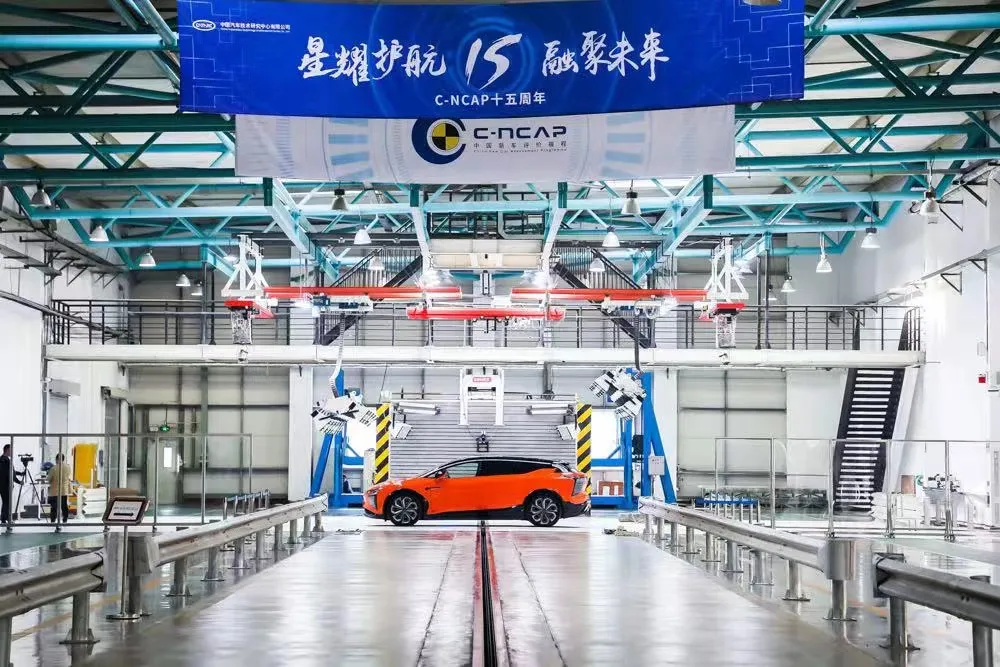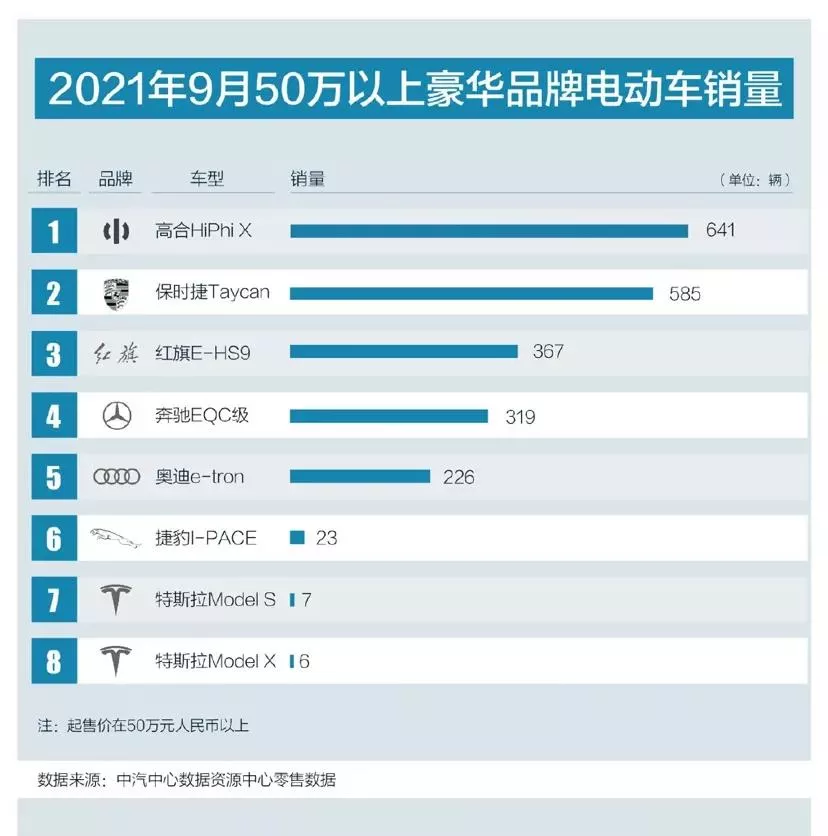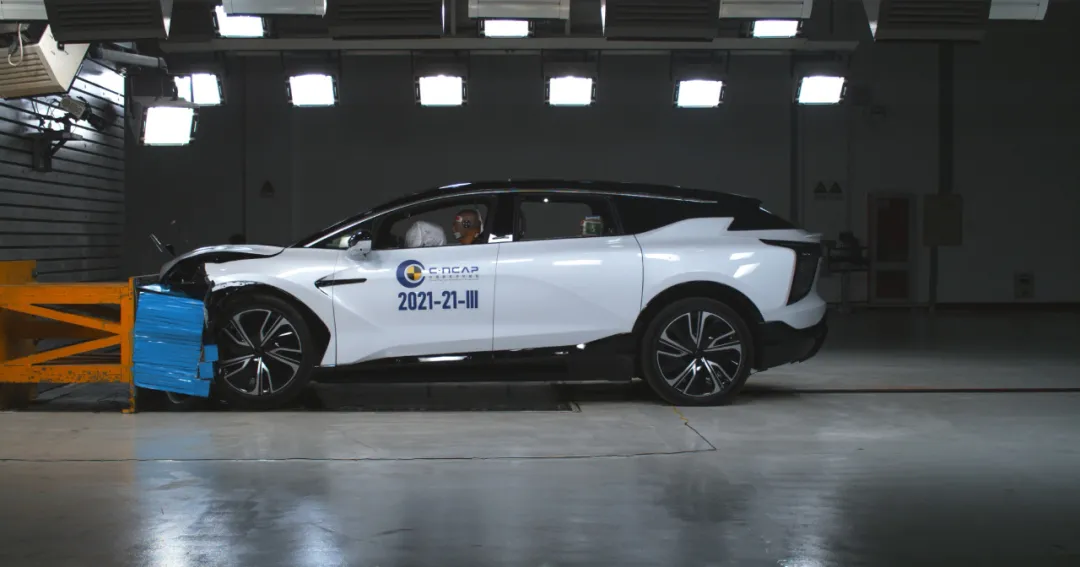Author: Su Qin
Introduction: For Red Flag, this collision test is just one of the many tests in the long history, without any special meaning. But for GAC (Guangzhou Automobile Group Co., Ltd.), it is an supreme honor. No matter how the result turns out, GAC is the winner with this collision. From the new force that has been repeatedly questioned by the industry, to now becoming the only new brand that competes with China’s auto crown jewel – Red Flag, GAC has completed a magnificent transformation.
On October 26, China Automotive Technology and Research Center (CATARC) held the C-NCAP 15th Anniversary event in Tianjin. The 15th anniversary was destined to be not just a simple procedural activity. In two public tests, Red Flag, as the representative of high-end fuel vehicles, and GAC HiPhi X, as the representative of China’s luxury brand pure electric vehicles, demonstrate the capabilities and new trends of China’s collision test with their collision test process and results.

CATARC experts said on site: “If the Red Flag H9 represents China’s luxury brand fuel vehicle, then GAC HiPhi X represents China’s luxury brand pure electric vehicle. This is one of the reasons why we chose this car for public demonstration in the C-NCAP 15th Anniversary event.”
For Red Flag, this collision test is just one of the many tests in the long history, without any special meaning. But for GAC, it is an supreme honor. No matter how the result turns out, GAC is the winner with this collision. From the new force that has been repeatedly questioned by the industry, to now becoming the only new brand that competes with China’s auto crown jewel – Red Flag, GAC has completed a magnificent transformation.
Why can GAC represent electric vehicles?
It has been repeatedly proven that independent brands find it difficult to enter the high-end market in the era of fuel vehicles. The lack of strength in production technology and parts technology leads to the solidification of the image of independent brands. The more praise there is for Japanese and German brands, the more prejudice and skepticism there is towards independent upgrades.
However, independent brands have been fighting and getting stronger after many defeats. Prejudices themselves must be broken. Therefore, the new Red Flag, built with all the resources of First Automotive Works Group, opened the era of independent million-level luxury cars. With new car-making forces such as NIO and GAC, the price has been raised to 300,000 and 500,000 with extreme service and technology.
In the September luxury brand electric car sales ranking of 500,000 yuan and above released by CATARC, GAC HiPhi X ranked first with sales of 641 vehicles and a month-on-month growth of 36.7%, surpassing Porsche Taycan. Other brands on the ranking list include Red Flag E-HS9, Mercedes-Benz EQC, Audi e-tron, Jaguar I-PACE, and Tesla Model S/X.
This is the first time in the history of Chinese brands that they have topped the monthly sales list of luxury electric cars in this particular market. At the end of August, GAC Aion began delivering the HiPhi X 4-seater version in full swing, securing a place for Chinese brands in the 8 million yuan luxury car club.
Since the start of mass production and delivery in May this year, the GAC Aion HiPhi X has maintained rapid production growth, with over 2,000 cars delivered in more than 100 cities nationwide.
Double assessment, more rigorous
The GAC Aion HiPhi X completed a frontal 40% offset collision test. The frontal 40% overlapped variable deformable barrier collision test is the most challenging of the three collision tests in C-NCAP standards, with the highest speed and collision energy. A smaller force area means a higher safety challenge and a greater test of the vehicle’s safety structure.
For vehicles of any fuel type, the frontal 40% offset collision test first hits the front compartment, whose deformation can absorb the impact energy and form the first layer of protection for the passenger compartment.
In particular, for new energy vehicles, the stability of the body structure is not only a direct protection of the occupants, but also closely related to the safety of the high-voltage battery pack. In recent years, many vehicle manufacturers, such as Voyah and Toyota, have released the first layer of their PACK safety protection schemes as body protection.
C-NCAP collision tests not only assess the mechanical damage caused by body deformation to passengers but also track the electrical safety performance after the collision, examining high-voltage electrical safety and power battery protection.
Passenger safety, no leakage or fire in the power battery
The collision results show that the GAC Aion HiPhi X, after a 64 km/h collision test, automatically cuts off the high-voltage circuit, eliminating the risk of electric shock. The vehicle automatically lights up its hazard warning lights and triggers the emergency rescue hotline (eCall), connecting the rescue center, ensuring that occupants receive immediate assistance.
After the collision, the GAC Aion front compartment showed obvious crushing deformation, which fully absorbed the collision energy and did not cause excessive impact on the passenger compartment.
The A-pillar of the passenger compartment remained virtually unchanged, indicating that the collision did not cause significant space compression for the driver and passengers. The shape of the side doors remained unchanged, and both the front and rear doors, including the specially designed scissor doors, could be opened normally, providing good conditions for passengers to self-rescue or be rescued. The roof wing doors presented great challenges to the safety of the body, and after the collision, there was no visible deformation on the scene, indicating that the rigidity was sufficient, and GAC Aion provided an ideal solution.
The airbags for the driver and front passenger deployed accurately with the crash test dummies seated properly, indicating the restraint system is functioning properly and reducing collision injuries to the driver and passengers. The pre-tensioned seat belts also worked effectively to eliminate any slack and firmly secure passengers to the seats at the start of the collision. The rear passengers were held firmly in place and their heads did not collide with the front seats, eliminating the potential risk of secondary impacts.
The high-voltage battery was well-protected, with the surrounding structures intact, and there were no leaks or smoke after the collision.
Overall, the vehicle structure and restraint system of the HiPhi X by Human Horizons have performed exceptionally well.
“Top-notch Safety” Safeguards the Journey
The HiPhi X was designed with “top-notch safety” in mind, which is why it was able to complete the NCAP 5-star crash test at a 40% offset with ease and excellence.

Human Horizons strictly adhered to the 5-star NCAP safety standards when creating the HiPhi X, utilizing a steel-aluminum hybrid body with advanced mechanical and chemical connection technology to create a reinforced body structure that provides effective protection for passengers and the power battery.
Furthermore, the HiPhi X is equipped with six major aviation-grade redundant systems, making its intelligent driving assistant safer and more reliable. In the six core parts of perception, braking, steering, communication, power, and computing, the HiPhi X has two sets of systems. Even if one system fails, the other system will immediately take over to ensure safety, providing a “double insurance” guarantee.
In summary, the HiPhi X by Human Horizons constructs super-strong protection through a dual protection system of machinery and technology. The “top-notch safety” design helps to protect the journey. As a true luxury new energy brand rooted in China while serving the world, it fiercely competes with prestigious traditional luxury brands.
This article is a translation by ChatGPT of a Chinese report from 42HOW. If you have any questions about it, please email bd@42how.com.